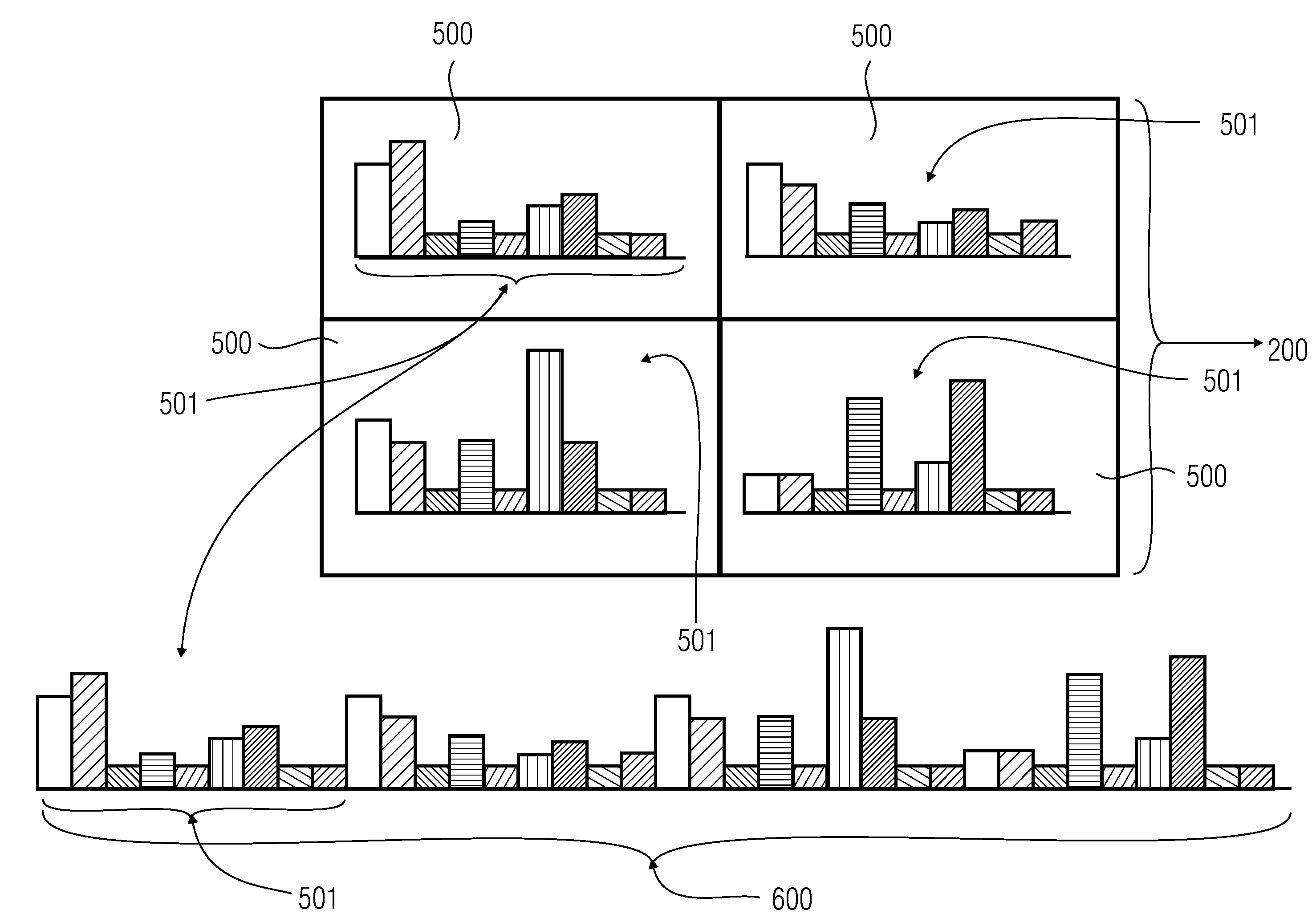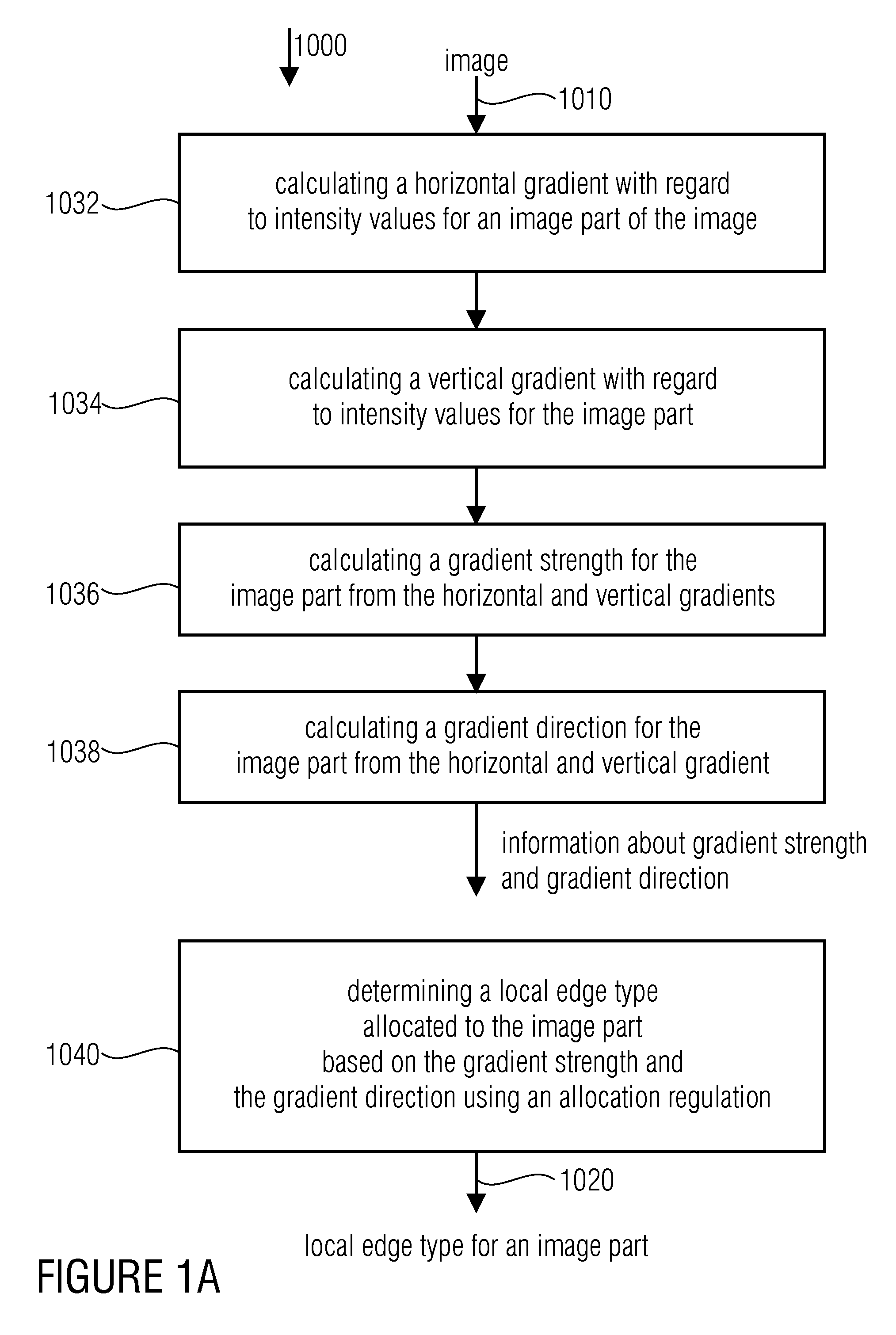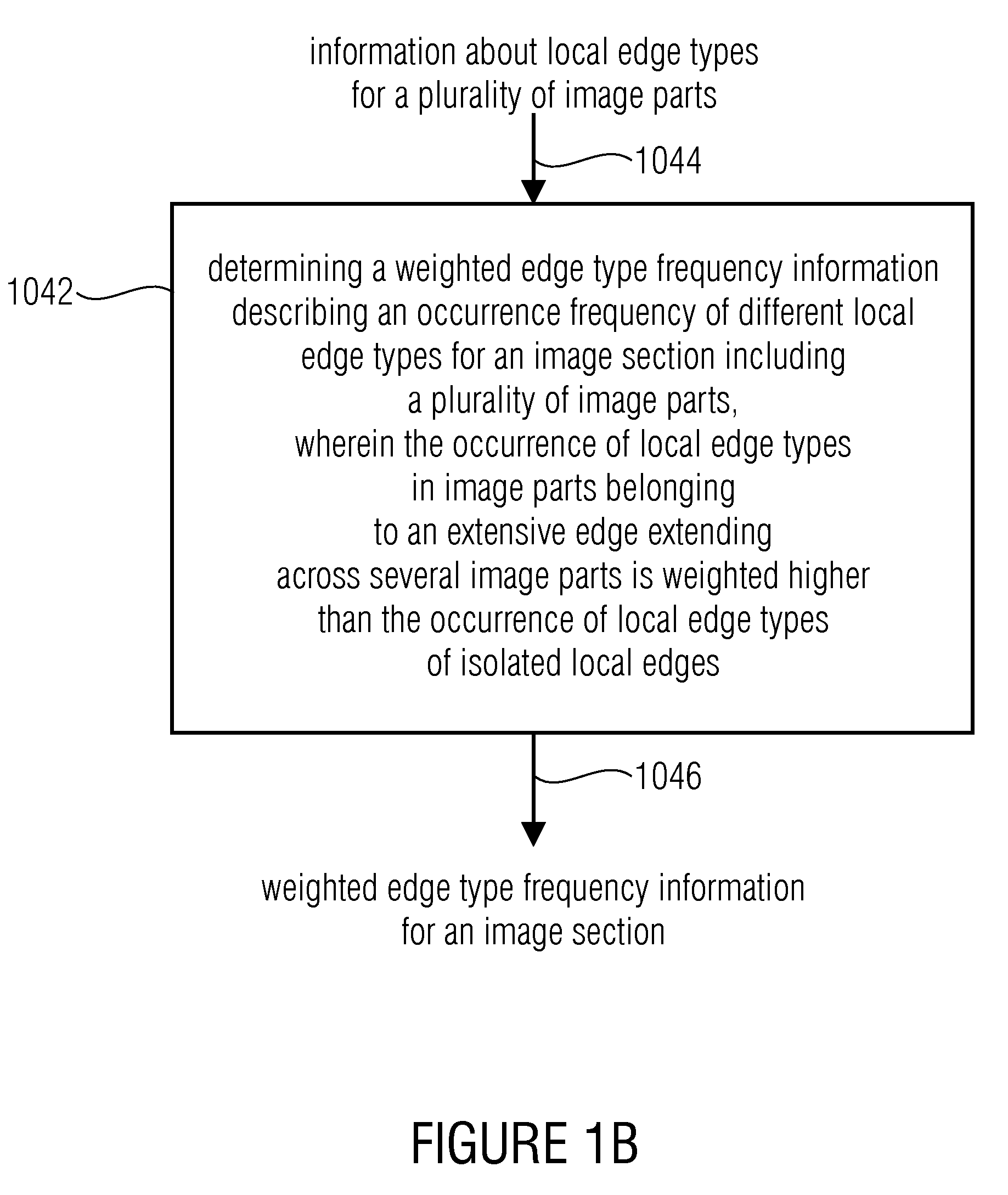Device and method for determining an edge histogram, device and method for storing an image in an image database, device and method for finding two similar images and computer program
a technology of image and edge histogram, applied in image analysis, instruments, computing, etc., can solve the problems of increasing search problems, affecting and increasing the difficulty of finding archived images, so as to improve the accuracy of image resampling and accuracy, and reduce the interference of image resampling. , the effect of reducing the interferen
- Summary
- Abstract
- Description
- Claims
- Application Information
AI Technical Summary
Benefits of technology
Problems solved by technology
Method used
Image
Examples
Embodiment Construction
[0042]FIGS. 1A-1D show a flowchart of a method for determining an edge histogram according to an embodiment of the present invention. The method of FIGS. 1A-1D is designated by 1000 in its entirety. Within the scope of the present description it is assumed that the method 1000 receives an image 1010 as an input variable which exists, for example, in digital form. As an example, the image 1010 may be given as a matrix of pixels, wherein the pixels are arranged in the form of rows and columns. The image 1010 may, however, alternatively also be given in an analog form, for example in the form of continuous electric signals.
[0043]Further, apart from that it is assumed that in the image two directions are defined which are referred to in the following as a horizontal direction and a vertical direction. For example, the horizontal direction may run along the rows of the image (i.e. from a first column to a last column). The vertical direction may, for example, run along the columns, i.e.,...
PUM
 Login to View More
Login to View More Abstract
Description
Claims
Application Information
 Login to View More
Login to View More - R&D
- Intellectual Property
- Life Sciences
- Materials
- Tech Scout
- Unparalleled Data Quality
- Higher Quality Content
- 60% Fewer Hallucinations
Browse by: Latest US Patents, China's latest patents, Technical Efficacy Thesaurus, Application Domain, Technology Topic, Popular Technical Reports.
© 2025 PatSnap. All rights reserved.Legal|Privacy policy|Modern Slavery Act Transparency Statement|Sitemap|About US| Contact US: help@patsnap.com



